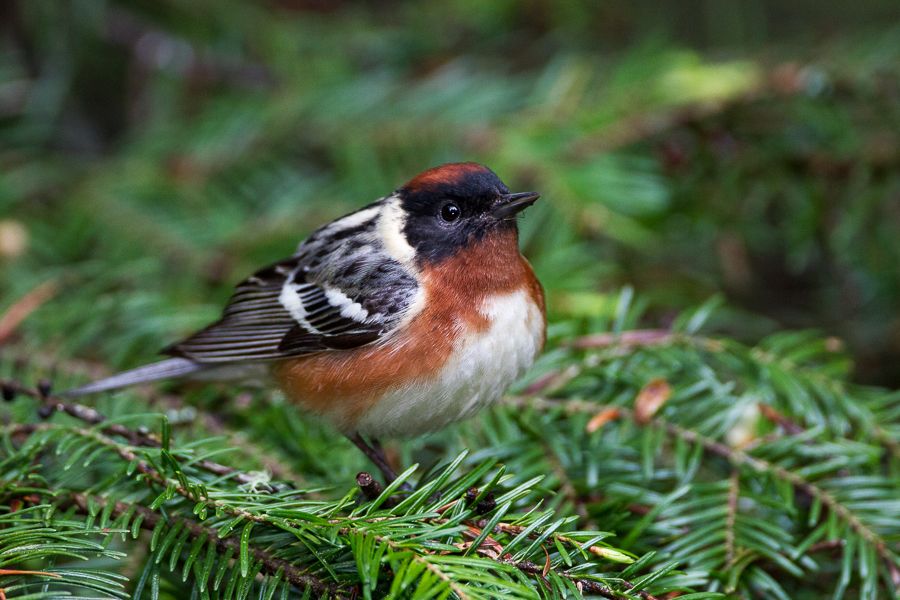Bay-Breasted Warbler (Dendroica castanea)
 There's nothing like a plague of spruce budworms to make this warbler's day. Such outbreaks occur cyclically in northern conifer stands where the bay-breasted warblers nest, and can denude vast tracks of spruce and fir. Inflicting the damage are voracious budworm larvae, pests that have been a bane of lumbermen since the early 1900s. Bay-Breasted Warblers often react to the infestations by creating a population boom of their own making to take advantage of the sudden insect bounty.
There's nothing like a plague of spruce budworms to make this warbler's day. Such outbreaks occur cyclically in northern conifer stands where the bay-breasted warblers nest, and can denude vast tracks of spruce and fir. Inflicting the damage are voracious budworm larvae, pests that have been a bane of lumbermen since the early 1900s. Bay-Breasted Warblers often react to the infestations by creating a population boom of their own making to take advantage of the sudden insect bounty.
Showing true team spirit, nesting bay-breast scale down their normal territorial requirements so that more of their kind can squeeze into a budworm-infested area. The prodigious appetites of the additional nestlings are satisfied by an abundant supply of this protein-rich food. The number of bay-breasted warblers produced during such years sometimes exceeds six times the region's annual norm.
Inevitably, the budworms begin eating themselves out of house and home, and the infestation subsides or ends abruptly. Bay-Breasted Warblers, whose numbers have swollen to peak levels during the budworm explosion, find slim picking after the decline. As a result, their numbers, too drop to normal levels, and a more stable bird-insect balance returns to the northern woodlands.
Reader's Digest: Book of North American Birds
No comments:
Post a Comment